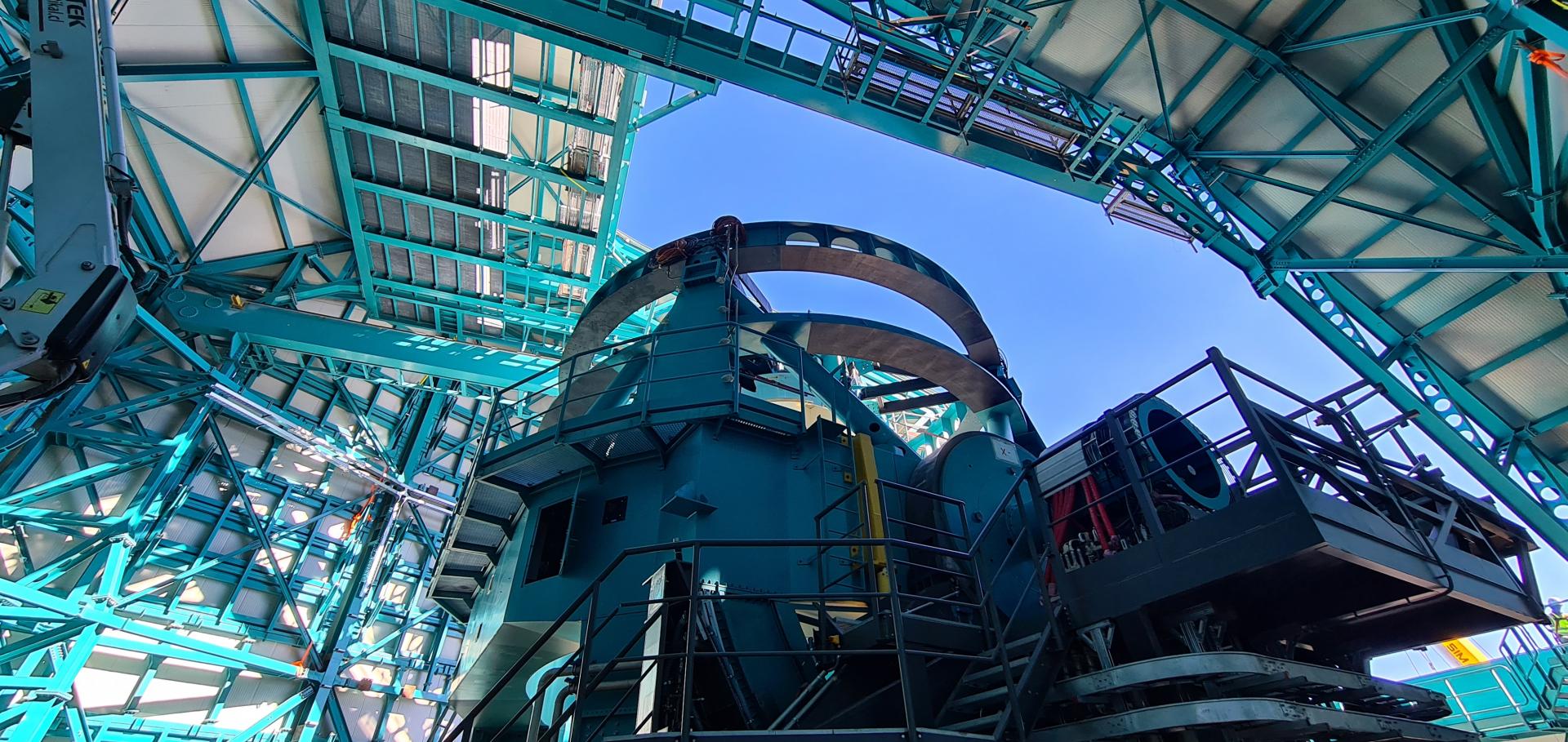Search for the production of ZW and ZZ boson pairs decaying into charged
leptons and jets in proton-antiproton collisions at sqrt(s)=1.96 TeV
ArXiv 1310.0086 (2013)
Authors:
CDF Collaboration, T Aaltonen, S Amerio, D Amidei, A Anastassov, A Annovi, J Antos, G Apollinari, JA Appel, T Arisawa, A Artikov, J Asaadi, W Ashmanskas, B Auerbach, A Aurisano, F Azfar, W Badgett, T Bae, A Barbaro-Galtieri, VE Barnes, BA Barnett, P Barria, P Bartos, M Bauce, F Bedeschi, S Behari, G Bellettini, J Bellinger, D Benjamin, A Beretvas, A Bhatti, KR Bland, B Blumenfeld, A Bocci, A Bodek, D Bortoletto, J Boudreau, A Boveia, L Brigliadori, C Bromberg, E Brucken, J Budagov, HS Budd, K Burkett, G Busetto, P Bussey, P Butti, A Buzatu, A Calamba, S Camarda, M Campanelli, F Canelli, B Carls, D Carlsmith, R Carosi, S Carrillo, B Casal, M Casarsa, A Castro, P Catastini, D Cauz, V Cavaliere, M Cavalli-Sforza, A Cerri, L Cerrito, YC Chen, M Chertok, G Chiarelli, G Chlachidze, K Cho, D Chokheli, A Clark, C Clarke, ME Convery, J Conway, M Corbo, M Cordelli, CA Cox, DJ Cox, M Cremonesi, D Cruz, J Cuevas, R Culbertson, N d'Ascenzo, M Datta, P de Barbaro, L Demortier, L Marchese, M Deninno, F Devoto, M D'Errico, A Di Canto, B Di Ruzza, JR Dittmann, M D'Onofrio, S Donati, M Dorigo, A Driutti, K Ebina, R Edgar, A Elagin, R Erbacher, S Errede, B Esham, S Farrington, JP Fernández Ramos, R Field, G Flanagan, R Forrest, M Franklin, JC Freeman, H Frisch, Y Funakoshi, C Galloni, AF Garfinkel, P Garosi, H Gerberich, E Gerchtein, S Giagu, V Giakoumopoulou, K Gibson, CM Ginsburg, N Giokaris, P Giromini, G Giurgiu, V Glagolev, D Glenzinski, M Gold, D Goldin, A Golossanov, G Gomez, G Gomez-Ceballos, M Goncharov, O González López, I Gorelov, AT Goshaw, K Goulianos, E Gramellini, S Grinstein, C Grosso-Pilcher, RC Group, J Guimaraes da Costa, SR Hahn, JY Han, F Happacher, K Hara, M Hare, RF Harr, T Harrington-Taber, K Hatakeyama, C Hays, J Heinrich, M Herndon, A Hocker, Z Hong, W Hopkins, S Hou, RE Hughes, U Husemann, M Hussein, J Huston, G Introzzi, M Iori, A Ivanov, E James, D Jang, B Jayatilaka, EJ Jeon, S Jindariani, M Jones, KK Joo, SY Jun, TR Junk, M Kambeitz, T Kamon, PE Karchin, A Kasmi, Y Kato, W Ketchum, J Keung, B Kilminster, DH Kim, HS Kim, JE Kim, MJ Kim, SB Kim, SH Kim, YK Kim, YJ Kim, N Kimura, M Kirby, K Knoepfel, K Kondo, DJ Kong, J Konigsberg, AV Kotwal, M Kreps, J Kroll, M Kruse, T Kuhr, M Kurata, AT Laasanen, S Lammel, M Lancaster, K Lannon, G Latino, HS Lee, JS Lee, S Leo, S Leone, JD Lewis, A Limosani, E Lipeles, A Lister, H Liu, Q Liu, T Liu, S Lockwitz, A Loginov, A Lucà, D Lucchesi, J Lueck, P Lujan, P Lukens, G Lungu, J Lys, R Lysak, R Madrak, P Maestro, S Malik, G Manca, A Manousakis-Katsikakis, F Margaroli, P Marino, M Martínez, K Matera, ME Mattson, A Mazzacane, P Mazzanti, R McNulty, A Mehta, P Mehtala, C Mesropian, T Miao, D Mietlicki, A Mitra, H Miyake, S Moed, N Moggi, CS Moon, R Moore, MJ Morello, A Mukherjee, Th Muller, P Murat, M Mussini, J Nachtman, Y Nagai, J Naganoma, I Nakano, A Napier, J Nett, C Neu, T Nigmanov, L Nodulman, SY Noh, O Norniella, L Oakes, SH Oh, YD Oh, I Oksuzian, T Okusawa, R Orava, L Ortolan, C Pagliarone, E Palencia, P Palni, V Papadimitriou, W Parker, G Pauletta, M Paulini, C Paus, TJ Phillips, G Piacentino, E Pianori, J Pilot, K Pitts, C Plager, L Pondrom, S Poprocki, K Potamianos, F Prokoshin, A Pranko, F Ptohos, G Punzi, N Ranjan, I Redondo Fernández, P Renton, M Rescigno, F Rimondi, L Ristori, A Robson, T Rodriguez, S Rolli, M Ronzani, R Roser, JL Rosner, F Ruffini, A Ruiz, J Russ, V Rusu, WK Sakumoto, Y Sakurai, L Santi, K Sato, V Saveliev, A Savoy-Navarro, P Schlabach, EE Schmidt, T Schwarz, L Scodellaro, F Scuri, S Seidel, Y Seiya, A Semenov, F Sforza, SZ Shalhout, T Shears, PF Shepard, M Shimojima, M Shochet, I Shreyber-Tecker, A Simonenko, K Sliwa, JR Smith, FD Snider, V Sorin, H Song, M Stancari, R St Denis, D Stentz, J Strologas, Y Sudo, A Sukhanov, I Suslov, K Takemasa, Y Takeuchi, J Tang, M Tecchio, PK Teng, J Thom, E Thomson, V Thukral, D Toback, S Tokar, K Tollefson, T Tomura, D Tonelli, S Torre, D Torretta, P Totaro, M Trovato, F Ukegawa, S Uozumi, F Vázquez, G Velev, C Vellidis, C Vernieri, M Vidal, R Vilar, J Vizán, M Vogel, G Volpi, P Wagner, R Wallny, SM Wang, D Waters, WC Wester III, D Whiteson, AB Wicklund, S Wilbur, HH Williams, JS Wilson, P Wilson, BL Winer, P Wittich, S Wolbers, H Wolfe, T Wright, X Wu, Z Wu, K Yamamoto, D Yamato, T Yang, UK Yang, YC Yang, W-M Yao, GP Yeh, K Yi, J Yoh, K Yorita, T Yoshida, GB Yu, I Yu, AM Zanetti, Y Zeng, C Zhou, S Zucchelli
Abstract:
We present a measurement of the production cross section for ZW and ZZ boson
pairs in final states with a pair of charged leptons, from the decay of a Z
boson, and at least two jets, from the decay of a W or Z boson, using the full
sample of proton-antiproton collisions recorded with the CDF II detector at the
Tevatron, corresponding to 8.9 fb^(-1) of integrated luminosity. We increase
the sensitivity to vector boson decays into pairs of quarks using a neural
network discriminant that exploits the differences between the spatial spread
of energy depositions and charged-particle momenta contained within the jet of
particles originating from quarks and gluons. Additionally, we employ new jet
energy corrections to Monte Carlo simulations that account for differences in
the observed energy scales for quark and gluon jets. The number of signal
events is extracted through a simultaneous fit to the dijet mass spectrum in
three classes of events: events likely to contain jets with a heavy-quark
decay, events likely to contain jets originating from light quarks, and events
that fail these identification criteria. We determine the production cross
section to be 2.5 +2.0 -1.0 pb (< 6.1 pb at the 95% confidence level),
consistent with the standard model prediction of 5.1 pb.


